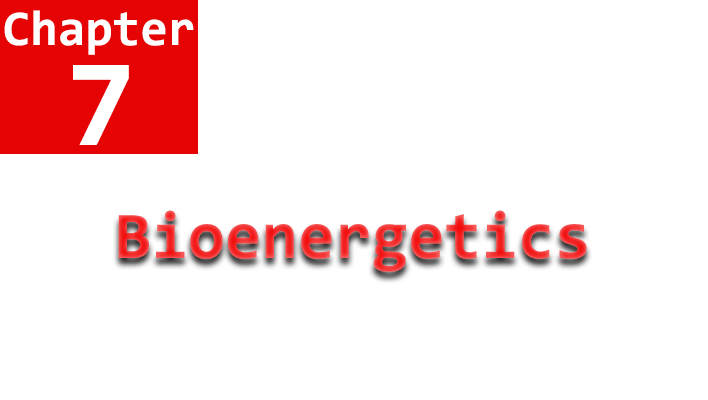Class 9th Biology Chapter 7 Bioenergetics Notes
Bioenergetics: It is the study of energy relationships and transformations in living organisms. Energy is obtained through the metabolism of food. Food contains potential energy in its bonds, and when these bonds are broken down, kinetic energy is released. Some energy is stored as potential energy in ATP molecules, while the rest is released as heat.
Oxidation-Reduction Reaction: All life processes involve energy flow, which is driven by oxidation-reduction reactions (redox reactions). In these reactions, electrons are exchanged between atoms. Oxidation refers to the loss of electrons, while reduction refers to the gain of electrons.
Long Answer Question
Short Answer Question
Exercise and MCQ’s
ATP (Adenosine Triphosphate): ATP is the main energy currency of all cells. It is a nucleotide consisting of three subunits: adenine, ribose, and three phosphate groups in a linear chain. ATP stores and releases energy through the breaking and formation of its high-energy phosphate bonds.
Photosynthesis: Photosynthesis is the process by which plants, algae, and some bacteria convert carbon dioxide and water into glucose in the presence of sunlight and chlorophyll. It is an anabolic process and a vital component of bioenergetics.
Light Reactions: Light reactions occur in the thylakoid membranes of chloroplasts. During these reactions, light energy is absorbed by chlorophyll, and electrons are emitted. The electrons pass through an electron transport chain, generating ATP. Water molecules are broken down (photolysis), releasing oxygen, and hydrogen atoms that are used to reduce NADP+ to NADPH.
Dark Reactions (Calvin Cycle): The dark reactions, also known as the Calvin cycle, occur in the stroma of chloroplasts. Carbon dioxide combines with 5-carbon compounds to form 6-carbon compounds, which then split into two 3-carbon compounds. The 3-carbon compounds are reduced to carbohydrates using ATP and hydrogen from NADPH. Some 3-carbon carbohydrates are used to regenerate the original 5-carbon compounds.
Role of Chlorophyll and Light: Chlorophyll and accessory pigments in photosystems absorb sunlight energy, which is converted into chemical energy. The blue and red lights are most effective in photosynthesis, with different wavelengths absorbed by different photosynthetic pigments.
In summary, bioenergetics is essential for understanding energy flow and transformations in living organisms. ATP serves as the primary energy currency in cells, while photosynthesis is a crucial process that converts sunlight into usable energy for plants and certain microorganisms. Chlorophyll plays a vital role in capturing light energy and driving the photosynthetic process.
Important Conceptual Questions about Bioenergetics
- What is bioenergetics?
- How do organisms obtain energy for their life processes?
- What happens when the bonds in food are broken down?
- What is the role of ATP in energy storage and transfer?
- Define oxidation and reduction reactions. How are they involved in energy flow in living organisms?
- What is the main energy currency in all cells, and what are its components?
- Explain the process of photosynthesis and its significance in living systems.
- Where do plants obtain water and carbon dioxide for photosynthesis?
- What are the two phases of photosynthesis, and where do they take place?
- Describe the events that occur during the light reactions of photosynthesis.
- What are the photosynthetic pigments, and how do they absorb and utilize light energy?
- How do dark reactions (Calvin cycle) result in the synthesis of glucose during photosynthesis?
- Who discovered the details of dark reactions, and what did they contribute to the field of photosynthesis?

